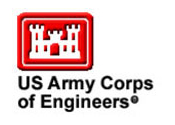
New eDNA results within the Chicago Waterway System (UNCLASSIFIED) – U.S. Army Corps of Engineers
Classification: UNCLASSIFIED
Caveats: NONE
PRESS RELEASE
U.S. Army Corps of Engineers
Chicago District
Date: January 14, 2010
Chicago - On January 7, 2010 the University of Notre Dame confirmed that a small number of water samples taken on the North Shore Channel near the Wilmette Pumping Station in late October 2009 have tested positive for the presence of Silver carp DNA.
Several hundred environmental DNA (eDNA) samples have been collected in waterways above the electric fish dispersal barrier in Romeoville, Illinois. Only a small percentage, less than five percent, have tested positive for the presence of Asian carp. Areas sampled include the Chicago Sanitary and Ship Canal, the Des Plaines River, the Illinois and Michigan (I&M) Canal, the Cal-Sag Channel, the Calumet River, the Chicago River and the North Shore Channel. Of those, positive eDNA detections have been found only in the Des Plaines River, portions of the Calumet Sag Channel and on the North Shore Channel.
"While we have reports of positive eDNA hits for Asian carp at a few locations above the fish barrier, it is important to remember that to date we have not found a single live or dead Asian Carp specimen where eDNA samples indicate that Asian carp genetic material may be present," said Col. Vincent Quarles, Commander of the U.S. Army Corps of Engineers, Chicago District.
According to the Metropolitan Water Reclamation District, The Wilmette Pumping Station does not generally operate in the winter. Typically, gates are only operated during flood events until warm weather when gates are also operated to maintain or improve water quality in North Shore Channel. Due to maintenance work on the gates the pumps are currently sealed shut, preventing any fish from traversing into Lake Michigan.
"The eDNA test is not a fool-proof indicator of the actual presence of live Asian carp, but a precautionary indication of what might be. MWRD views it as useful for strategic planning and evaluation of potential tactical operations," said Richard Lanyon, Executive Director of the Metropolitan Water Reclamation District.
Near term efforts by the Corps of Engineers are focused on tracking the leading edge of Asian carp movement, preventing migration via the barrier system in the Chicago Sanitary and Ship Canal and preventing fish bypasses via flanking waterways, primarily the Des Plaines River and the I&M Canal.
On January 12th, under an emergency authority provided by Congress, the Army Corps of Engineers received approval to execute a series of interim structural solutions to possible bypass routes from the Des Plaines River and I&M Canal. Construction of those measures will begin in spring 2010.
The U.S. Army Corps of Engineers will continue to work in cooperation with the Illinois Department of Natural Resources, U.S. Environmental Protection Agency, U.S. Coast Guard, U.S. Fish and Wildlife Services and other state and local agencies with the common goal to keep the Asian carp from migrating into the Great Lakes. These agencies, working through the Chicago Area Waterway System Team, are actively considering all options to prevent the possibility of Asian carp that may be above the fish barrier from migrating into Lake Michigan, including the controlled operation of existing structures, intensive fishing efforts, and potential application of fish toxicants, like rotenone.
"As a result of the latest eDNA findings, the Army Corps of Engineers, working in collaboration with our federal, state, and local partners, is prepared to use its authorities to support actions as part of a comprehensive plan that leverages the full authorities, capabilities and resources of all relevant agencies," said Maj. Gen. John Peabody, Commander of the U.S. Army Corps of Engineers, Great Lakes and Ohio River Division.
"We know eDNA is an indicator of the potential presence of live Asian carp, but eDNA has limitations. It can't tell us how many fish exist, whether they are juveniles or adults, or whether the source of the DNA evidence is from live or dead Asian carp. We have planned research with the University of Notre Dame that is designed to address these information gaps. However, we believe eDNA is an important tool to assist in informing management decisions, especially in combination with other sampling efforts such as electro fishing, netting, toxicant applications, and so forth," Peabody said.
As new eDNA results are recorded, they will be posted to the U.S. Army Corps of Engineers website at www.lrc.usace.army.mil.
Classification: UNCLASSIFIED
Caveats: NONE
